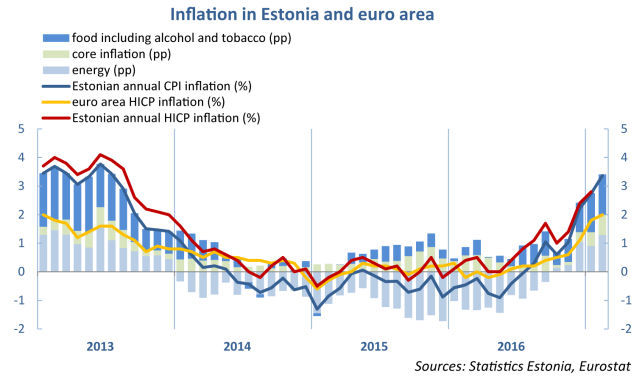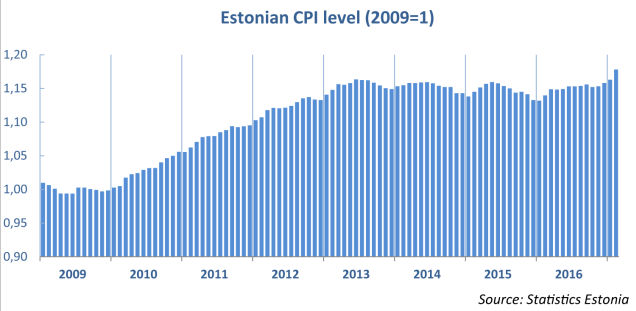Analytics, Banks, Direct Speech, Economics, Estonia, Export, Foreign trade , Inflation
International Internet Magazine. Baltic States news & analytics
Saturday, 20.04.2024, 07:20
Price rises in February in Estonia were primarily due to higher prices for oil and food
 Print version
Print version |
|---|
Data from Statistics Estonia show that consumer price inflation was 3.4% in February, with prices up 1.3% on the previous month.Preliminary estimates put inflation in the euro area at 2% and prices had stopped falling in all the euro area countries according to the latest data from January. Higher inflation reduces the purchasing power of consumers, but it could be the long-awaited sign of increasing economic activity.
Inflation has risen mainly because of external factors, particularly the rise in the price of oil and food. Food prices are rising on the Estonian and European Union markets mainly because the oversupply that was exacerbated by the loss of the Russian market in 2014 has relented. A second reason is that the weather has been bad in southern Europe this year and the bad weather has harmed fruit and vegetable crops. Prices for unprocessed food, including garden produce, rose in the euro area at a record rate of 5.2% in February. More stable rises in commodities prices will be supported by the narrower fluctuations in the oil price on world markets after its jump to 55 dollars at the end of November following the OPEC agreement to cut production. Commodities prices on world markets are still relatively low in historical terms.
The causes of higher inflation in Estonia are about the same as those elsewhere in the euro area. Around one quarter of inflation in February was due to motor fuels being 23% more expensive than a year earlier, and the continuing broad-based rise in prices for food products. One reason that inflation in Estonia has been higher than the euro area average is that excise rates have risen. Excise on motor fuels, alcohol and tobacco lifted inflation by around one percentage point in February. Core inflation, which covers manufactured goods and services, has also picked up a little in recent months, and it reached 1.3% in February. It is mainly prices for services that have risen, while prices for manufactured goods have climbed more slowly because of cheap import prices.

CPI









 «The Baltic Course» Is Sold and Stays in Business!
«The Baltic Course» Is Sold and Stays in Business!

